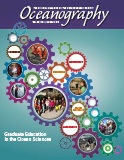First Paragraph
An Individual Development Plan (IDP) is a personalized strategic plan. IDPs have been used extensively in government and business to help employees improve their skills and leadership potential, and to progress in their careers. The Federation of American Societies for Experimental Biology (FASEB) first introduced the approach to help provide postdocs with guidance about career preparation. Those materials were subsequently incorporated into a Web-based online career-planning tool, MyIDP, managed by the American Association for the Advancement of Science (AAAS). The first step in the development of a personal graduate-student IDP is to identify long-term career goals, which can then be used to shape the graduate experience. Next, a graduate student would need to undergo a realistic self-assessment of her/his knowledge and skills to identify strengths and weaknesses. With this information in hand, the student would be well prepared for a discussion with a mentor/major professor to flesh out how the strengths and weaknesses relate to the ultimate career goal. The plan would then lay out a deliberate and specific approach to address the weaknesses and to further enhance the strengths, for example, courses to enhance content knowledge, workshops to enhance communication skills, teaching to gain instructional skills, presenting at a meeting and publishing a paper to disseminate one’s research, and internships to gain practical experience.

